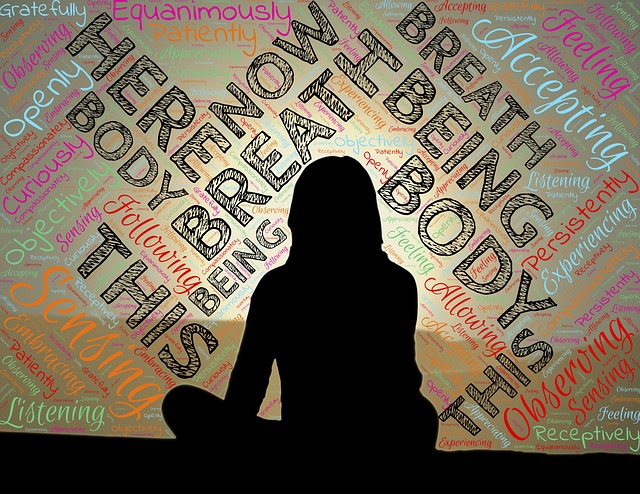Marvin Belzer, meditation teacher and faculty member of the UCLA Department of Psychiatry, offers a guided meditation, Mindful Monday, as part of the regular guided meditation sessions provided by the Mindful Awareness Research Center (MARC), UCLA. In a recent Mindful Monday podcast, he focused on the process of meditation and as well as offering a guided silent meditation.
Marvin stressed that the process of meditation does not involve rush to get somewhere and is not about “doing” which is typical of our daily life as we seek to achieve things in family life, work and recreation. While meditation does require “effort” it is a subtle process, unlike our exertions to achieve things in life. To be effective in meditation we have to give ourselves permission not to aim for “getting things done”.
Marvin explained that the process of meditation involves directing attention to something specific that is occurring in our everyday life. It can involve the sounds that surround us, our breath or our bodily sensations. Marvin maintains that meditation cultivates concentration – a skill that can flow over to every area of our life and enhance our relationships, e.g. through deep listening. Focusing on something that is neutral can be calming and provide clarity.
Marvin’s guided meditation process
Marvin’s process began with several deep breaths to relax your body and ground yourself in the present moment. It also helps at this stage to reaffirm your intention in meditating. He followed this up with a focus on ambient sounds – the sounds that enter your awareness from outside your immediate location. This can be difficult for some people because our natural tendency is to analyse sounds, identify their source and categorise them as good or bad, intrusive or relaxing, harmful or helpful. In focusing on sounds, it is important to suspend intellectual activity and just experience the sounds as they are in the present moment.
Distractions such as planning the day’s activities or worrying about some future event are a natural part of the process. Marvin stresses that the experience of meditation is a very personal thing that can be impacted by our emotions at the time, our intellectual preoccupations and our life conditioning. There is no right way or perfect end result – there is a continuous process of focusing, being distracted, and returning to our focus – a cycle that builds our awareness muscle. Jon Kabat-Zinn maintains that while mindfulness meditation involves “paying attention on purpose”, it also requires a non-judgmental frame of mind – not evaluating ourselves against some perfect model, process or way of “doing meditation”.
Marvin suggests that you do a light body scan at the outset to ascertain any points of tension and to notice your posture which should be relaxed but enable you to be alert to what is happening for you. An alternative at this stage, particularly if you are feeling stressed, is to do a full body scan which can enable you to progressively release tension wherever it is experienced in your body. Your body and specific bodily sensations can become the focus of your meditation, e.g. paying attention to the vibrations in your joined fingers or your feet on the floor or ground. You can also tune into the physical sensation of experiencing fear, anxiety or sorrow – noticing where in your body a strong emotion is being manifested. Marvin points out that this process of paying attention to the embodiment of an emotion can serve as a refuge from the disturbance of challenging emotions.
Another source of achieving calm that Marvin identifies is your breath. He suggests that you can rest in your breathing – paying attention to where in your body you can experience your breath in the moment, e.g. the movement of your chest or abdomen or the flow of air through your nose. This process does not involve controlling your breath but experiencing it as it is – slow or fast, light or deep, even or uneven. We are always breathing as a natural process of being alive, so resting in your breath can serve as a refuge at any time throughout your day. Through meditation practice, you can drop automatically into the calming influence of your breath – just as performers and elite athletes do when they are about to perform or compete. If you associate breath awareness with a bodily sensation such as vibrations when your fingers are joined during regular meditation practice, then the act of bringing your fingers together (e.g., when waiting for something or somebody) can activate breath consciousness and the calming influence of breathing.
Reflection
Meditation is a process, not a goal post. Regular practice enables us to find calm in the midst of the waves of life. It is important to remain non-judgmental. As we grow in mindfulness through meditation in whatever form we choose, we can develop calmness and tranquility and have a genuine source of refuge when times become challenging or we begin to become overwhelmed by emotions. Our constant focus during meditation serves as an anchor in life when we encounter the turbulence of challenging times.
___________________________________________
Image by John Hain from Pixabay
By Ron Passfield – Copyright (Creative Commons license, Attribution–Non Commercial–No Derivatives)
Disclosure: If you purchase a product through this site, I may earn a commission which will help to pay for the site, the associated Meetup group, and the resources to support the blog.







